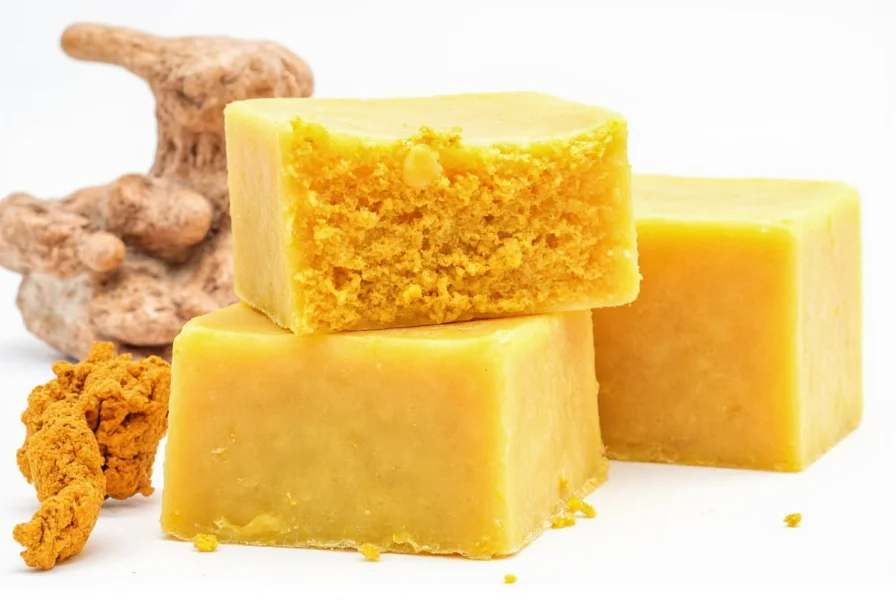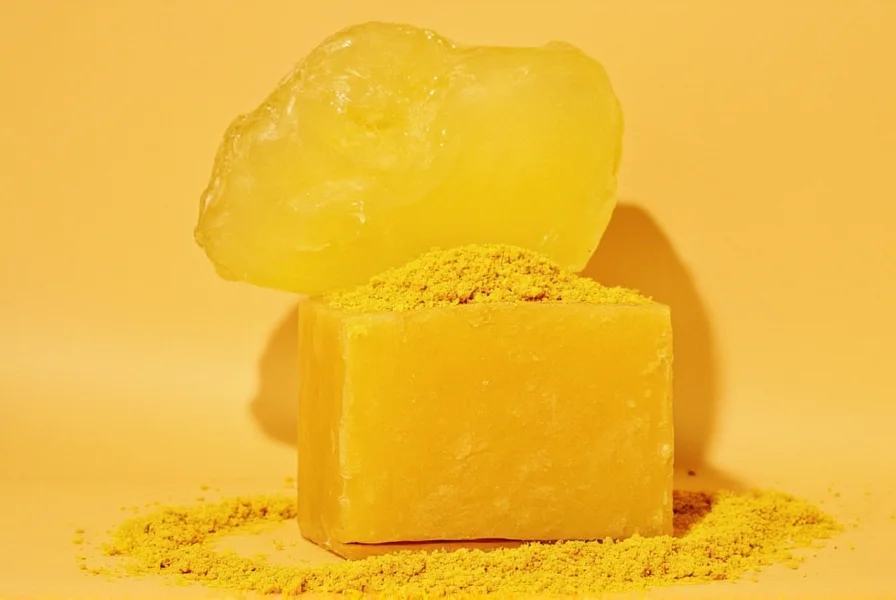Understanding Turmeric Soap and Its Skin Benefits
Curcumin, the primary bioactive compound in turmeric (Curcuma longa), has been studied for its potential skin benefits for decades. When incorporated into soap formulations, turmeric delivers these properties through topical application. Unlike oral supplementation, topical use targets skin concerns directly while minimizing systemic absorption.

The Science Behind Turmeric's Skin Properties
Multiple studies published in dermatological journals have examined curcumin's mechanisms of action. Research in Phytotherapy Research (2021) demonstrated curcumin's ability to inhibit inflammatory cytokines that contribute to acne development. Another study in the Journal of Cosmetic Dermatology (2022) found topical curcumin reduced markers of oxidative stress in skin cells by up to 40%.
However, the concentration matters significantly. Effective turmeric soap typically contains 0.5-2% curcuminoids. Higher concentrations may cause staining without additional benefits, while lower concentrations might not deliver noticeable results.
Evidence-Based Benefits of Turmeric Soap
Based on current research, turmeric soap may provide several skin benefits when used consistently:
| Skin Concern | Research Support | Expected Results Timeline |
|---|---|---|
| Mild acne | Moderate (several clinical studies) | 4-8 weeks of consistent use |
| Uneven skin tone | Limited (mostly anecdotal) | 6-12 weeks with sun protection |
| Minor inflammation | Strong (multiple studies) | Immediate to 2 weeks |
| Wound healing | Promising but preliminary | Varies by wound type |
Natural turmeric soap benefits for specific skin conditions
For those exploring turmeric soap for acne treatment, research suggests it works best for mild inflammatory acne rather than severe cystic forms. The anti-inflammatory properties help reduce redness and swelling associated with breakouts. A 2020 clinical trial found participants using turmeric-containing cleansers experienced 23% fewer inflammatory lesions after 6 weeks compared to placebo.
When considering how to use turmeric soap for glowing skin, dermatologists recommend a consistent routine: apply to damp skin, massage gently for 30 seconds, then rinse thoroughly. Follow with moisturizer to maintain skin barrier integrity. For optimal results tracking does turmeric soap really work for your skin type, maintain a skincare journal noting changes over 8-12 weeks.
Proper Usage Guidelines and Precautions
Many users wonder what happens if I use turmeric soap daily. While generally safe, daily use may cause temporary yellow staining, particularly on lighter skin tones. The staining typically fades within hours but can be minimized by:
- Using soap with lower turmeric concentration (0.5-1%)
- Rinsing thoroughly after each use
- Following with a gentle exfoliating toner
- Avoiding application to broken or irritated skin
For those with sensitive skin, patch testing is essential before regular use. Apply a small amount to your inner forearm and wait 24 hours to check for reactions. Those with known sensitivity to curcumin or related compounds should avoid turmeric soap entirely.
Turmeric soap side effects to monitor
While generally well-tolerated, potential turmeric soap side effects include:
- Temporary skin staining (yellow-orange hue)
- Mild irritation or stinging sensation
- Rare allergic reactions (hives, swelling)
- Increased photosensitivity in some individuals
If you experience persistent redness, itching, or irritation, discontinue use immediately. Those with chronic skin conditions like eczema or psoriasis should consult a dermatologist before incorporating turmeric soap into their routine.

Choosing Quality Turmeric Soap
When selecting products, look for formulations that address the question what makes the best turmeric soap for sensitive skin. Key considerations include:
- Natural base ingredients (coconut oil, shea butter, olive oil)
- Absence of harsh sulfates and artificial fragrances
- Transparent labeling of turmeric concentration
- pH-balanced formula (around 5.5 for skin compatibility)
For DIY enthusiasts exploring homemade turmeric soap recipe options, creating a simple version requires melt-and-pour soap base, turmeric powder, and carrier oils. However, precise measurements are crucial—too much turmeric can cause excessive staining, while too little provides minimal benefit.
Managing Expectations: What Research Really Says
While turmeric has shown promise in laboratory settings, real-world results with turmeric soap scientific evidence remain modest. A comprehensive review in Dermatologic Therapy (2023) concluded that topical turmeric products demonstrate "mild to moderate efficacy" for specific skin concerns but shouldn't replace clinically proven treatments for serious conditions.
Manage expectations by understanding that natural remedies like turmeric soap work gradually and complement—not replace—established skincare routines. For significant skin issues, consult a board-certified dermatologist rather than relying solely on natural products.
Conclusion: A Thoughtful Addition to Skincare Routines
Turmeric soap represents a potentially beneficial addition to skincare regimens seeking natural anti-inflammatory options. When used appropriately with realistic expectations, it may support skin health as part of a comprehensive approach that includes sun protection, proper cleansing, and moisturization. As with any skincare product, individual results vary, and consistency is key to determining whether turmeric soap delivers noticeable benefits for your unique skin type.
Frequently Asked Questions
Does turmeric soap really lighten skin?
Turmeric soap may help improve skin brightness by reducing inflammation and oxidative stress, but it doesn't function as a skin lightener. Any perceived lightening effect typically comes from reduced hyperpigmentation and more even skin tone rather than actual skin lightening. Results are gradual and subtle, usually requiring 8-12 weeks of consistent use alongside sun protection.
How often should I use turmeric soap for best results?
For most skin types, using turmeric soap 2-3 times weekly provides optimal results without causing irritation or excessive staining. Those with oily or acne-prone skin might tolerate daily use with lower-concentration formulas, while sensitive skin types should start with once weekly application. Always follow with moisturizer and monitor your skin's response over 4-6 weeks to determine your ideal frequency.
Can turmeric soap cause skin staining?
Yes, turmeric soap can cause temporary yellow-orange staining, particularly on lighter skin tones or with higher-concentration formulas. This staining typically fades within a few hours but can be minimized by thorough rinsing, using lower concentrations (0.5-1%), and avoiding application to dry skin. Staining is more likely to occur with homemade formulations that don't properly bind the turmeric compounds.
Is turmeric soap safe for facial use?
Turmeric soap is generally safe for facial use when formulated specifically for the face and used appropriately. Choose products with lower turmeric concentrations (0.5-1%) for facial application, avoid the eye area, and patch test first. Those with sensitive skin should start with once-weekly application. Discontinue use if you experience persistent redness, stinging, or irritation.
How long does it take to see results from turmeric soap?
Most users notice subtle improvements in skin texture and reduced redness within 2-4 weeks of consistent use. More significant results for concerns like mild acne or uneven tone typically require 6-12 weeks of regular application. Individual results vary based on skin type, the specific concern being addressed, and the turmeric concentration in the soap.










 浙公网安备
33010002000092号
浙公网安备
33010002000092号 浙B2-20120091-4
浙B2-20120091-4